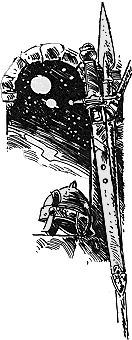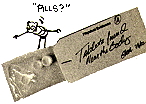|
So what did he have planned for the future? Were there any exciting ideas for a new game? 'Yes there is actually.
Let's see. I'm not too sure how much I should say about this as it might turn into a product. I've at least one
-- probably several. Personally I'd like to reach new segments of the audience by making each new game innovative
or appealing in a different way from all the others so that someone who had maybe tried Zork or tried
a mystery and not gotten excited about it might find something really interesting in a different sort of game.
'I think all categories of popular fiction would be fun to make into games. Personally I would like it to be
just interactive fiction. Well, writing interactive fiction plus is a two edged sword, because while you have a
lot more room to do things in you also have the problem of taking on a bigger project and having a lot more work
to do to get all the details right. I sort of prefer a smaller scope, something more like a stage play instead
of a movie. I think the confines are helpful in some ways.
'Well actually I did work on a game that I spent about six months on and then decided to shelve it, so to speak
-- to put it aside. The problem there, was that the story line wasn't sufficiently well developed to make it really
interesting. I guess I had a vision of a certain kind of atmosphere in the writing that was rather hard to bring
off and after some testing in house here, it became clear that it would need some significant changes to make it
work right. I'm glad we're able to do that and we don't have to forge ahead with something that doesn't really
work well.'
Infocom appear as a very secretive organisation. I asked Stu whether this profile was intentional? 'Yes, I think
it's generally true of American software companies particularly that they don't comment on new products until they're
officially announced. And I think the reason for that is because of the last question we talked about where the
product may be under development and although the company may intend to release it on time, unforseen things may
happen and it has to be postponed or cancelled. So it just seems safer, I guess, to keep the wraps on a product
until it's finished.'
When I asked Stu what his favourite game was he pointed out that one of them wasn't an Infocom game. No problem,
said I, just tell us what they are. 'It's just that the other times I've been asked that question, usually Infocom
games are excluded. Okay, it's very hard to say, really. It's like asking a parent to pick a favourite child. Each
are favourites in different ways. I still enjoy Witness for certain aspects of it, although I now feel
that I could have done it a lot better. That was my first one.
|




